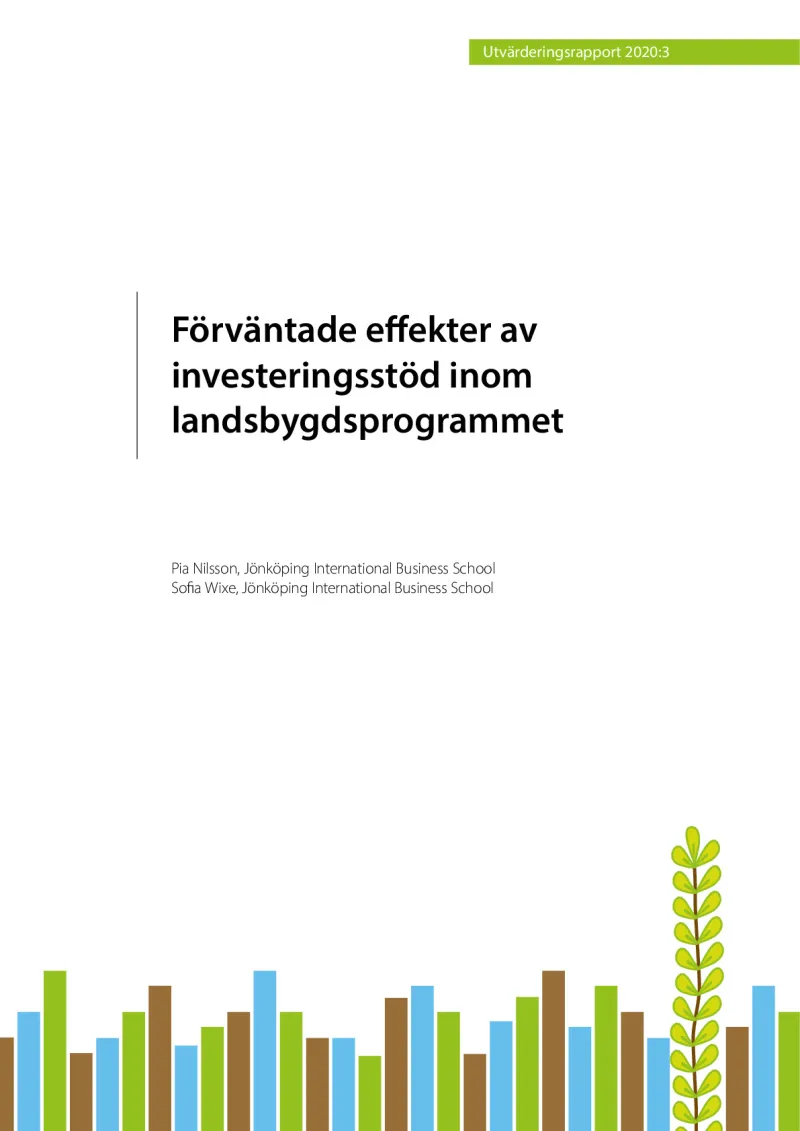Evaluation of the expected impact of investment support from Sweden's RDP
The report aims to estimate the expected impact on the competitiveness of investment support of the 2014-2024 Rural Development Programme (RDP). This knowledge will be used to better design and implement current and future programmes.
- Sweden
- 2014-2022
- Socio-economic impacts


The 2014-2020 RDP moves towards the EU’s overall objectives of smart and inclusive growth through support and compensation aimed at developing rural areas. Environment, sustainable development and innovation are thus key priorities of the programme. The Swedish RDP is divided into six priorities that describe the objectives the support intends to contribute to and 15 more detailed focus areas.
The report, published in 2023, estimates the expected impact on the competitiveness of investment support (Sub-measure 4.1/2a) under the RDP 2014-2020. Five complementary dimensions of farm competitiveness were considered: labour productivity, total factor productivity, employment, turnover and market share.
To forecast and draw conclusions on the expected impact of the RDP, the study estimated the impact of the corresponding support in the previous programming period of 2007-2013. This knowledge, in turn, aims to increase the possibilities of designing and implementing current and future programmes with improved achievements and cost-effectiveness.
The report presents descriptive statistics on the geographical distribution of aid, as illustrated by Geographic Information Systems (GIS). The report answers the following questions: 1) What does the distribution of support look like? 2) How has investment support in the 2007-2013 programming period affected the competitiveness of agricultural enterprises? 3) Based on the investment support granted in the 2007-2013 programming period, what effects can be expected on the competitiveness of agricultural holdings receiving investment support in the 2014-2020 programming period? 4) How do the estimated and expected effects differ over time and between companies depending on geographical location?
The report is limited to Measure 4.1/2a, which means that an analysis of expected impacts linked to other support under RDPs was not carried out. For the 2007-2013 programming period, the analyses are limited to Measure 121 (modernisation of agricultural holdings), which is closest to the support given in the 2014-2020 programming period.
An additional limitation in this report is that the evaluator could only include the support granted up to and including 2016 since it is the last year access to Statistics Sweden’s corporate data was granted.
The evaluation found that the effects of the support were positive and lasted for the long term, especially in terms of productivity and turnover. Although the overall average effect of the aid is statistically significant and positive over the period analysed (2007-2016), the effect is not significant or even significantly negative in the first years after the companies received support. This may indicate the supported companies are going through a transition period and that it takes time for investment to be traced in terms of increased competitiveness. For all competitiveness dimensions, except employment, the deceleration of the effect is not visible towards the end of the ten year period.
Secondly, there are geographical differences in the impact of support: the largest employment effects are found among support companies in the northern and central counties of the country. The results also indicate that positive productivity effects can have positive employment effects, which means that an increase in output per employee may be partly due to a decrease in the number of employees. The geographical differences show the importance of taking into account factors that can be linked to the geographical location of the supported companies. To conclude, there are differences in the distribution of support over time and between undertakings: there are statistically significant differences between undertakings receiving support in the 2014-2020 and 2007-2013 programming periods, where supported companies tend to become larger and more productive over time. Systematic differences also exist between beneficiary and non-beneficiary companies.
Author(s)
Jönköping International Business School, Pia Nilsson, Sofia Wixe